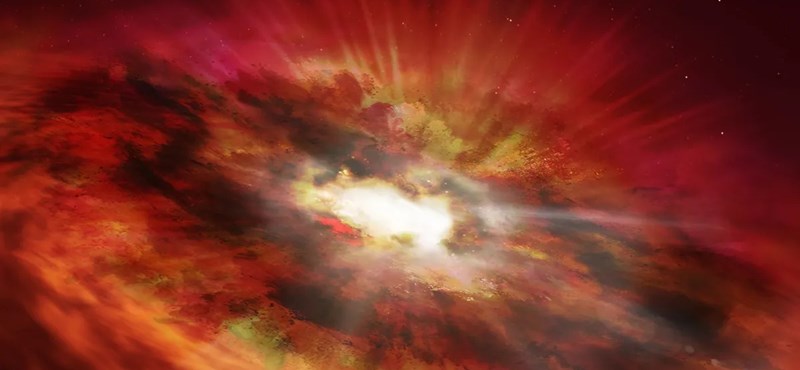[{“available”:true,”c_guid”:”7029e35e-391c-41e5-a9eb-c6a1c85c5e1f”,”c_author”:”hvg.hu”,”category”:”tudomany”,”description”:”Könnyebb lesz a menü megtervezése, mielőtt valaki ellátogat egy vendéglátóhelyre – a felhasználók képein ugyanis a jövőben megjelöli az alkalmazás, hogy az étlapról mely tételről lehet szó.”,”shortLead”:”Könnyebb lesz a menü megtervezése, mielőtt valaki ellátogat egy vendéglátóhelyre – a felhasználók képein ugyanis…”,”id”:”20240126_google_maps_terkep_uj_funkcio_ettermek_kavezok_etelek_italok_cimkezese_felismerese”,”image”:”https://api.hvg.hu/Img/ffdb5e3a-e632-4abc-b367-3d9b3bb5573b/7029e35e-391c-41e5-a9eb-c6a1c85c5e1f.jpg”,”index”:0,”item”:”b344f23f-7c62-4a3a-b47d-bf74426227d1″,”keywords”:null,”link”:”/tudomany/20240126_google_maps_terkep_uj_funkcio_ettermek_kavezok_etelek_italok_cimkezese_felismerese”,”timestamp”:”2024. január. 26. 12:03″,”title”:”Sokan fognak örülni a Google Térkép új funkciójának”,”trackingCode”:”RELATED”,”c_isbrandchannel”:false,”c_isbrandcontent”:false,”c_isbrandstory”:false,”c_isbrandcontentorbrandstory”:false,”c_isbranded”:false,”c_ishvg360article”:false,”c_partnername”:null,”c_partnerlogo”:”00000000-0000-0000-0000-000000000000″,”c_partnertag”:null},{“available”:true,”c_guid”:”718821e1-7941-4eb3-8f2f-4e0e92022985″,”c_author”:”hvg.hu”,”category”:”tudomany”,”description”:”Ír kutatók szerint a bél mikrobiomja jelentős hatással lehet a szociális szorongásos zavarra. Az elméletüket egérkísérlettel is igazolni tudták. Felfedezésük új terápiás lehetőségek korát hozhatja el.”,”shortLead”:”Ír kutatók szerint a bél mikrobiomja jelentős hatással lehet a szociális szorongásos zavarra. Az elméletüket…”,”id”:”20240127_szocialis_szorongas_szocialis_fobia_bel_mikrobiom_belbakteriumok_belflora_taplalkozas”,”image”:”https://api.hvg.hu/Img/ffdb5e3a-e632-4abc-b367-3d9b3bb5573b/718821e1-7941-4eb3-8f2f-4e0e92022985.jpg”,”index”:0,”item”:”34320aa3-45be-429b-ba9a-2a20e629a0a3″,”keywords”:null,”link”:”/tudomany/20240127_szocialis_szorongas_szocialis_fobia_bel_mikrobiom_belbakteriumok_belflora_taplalkozas”,”timestamp”:”2024. január. 27. 10:03″,”title”:”A szorongás váratlan feloldási módjára találtak rá kutatók: egyen mást”,”trackingCode”:”RELATED”,”c_isbrandchannel”:false,”c_isbrandcontent”:false,”c_isbrandstory”:false,”c_isbrandcontentorbrandstory”:false,”c_isbranded”:false,”c_ishvg360article”:false,”c_partnername”:null,”c_partnerlogo”:”00000000-0000-0000-0000-000000000000″,”c_partnertag”:null},{“available”:true,”c_guid”:”37f5d6f6-64fc-46c8-92dc-211383ad8c25″,”c_author”:”hvg.hu”,”category”:”itthon”,”description”:”Érdemes alaposan tájékozódni, mielőtt valaki útnak indul.”,”shortLead”:”Érdemes alaposan tájékozódni, mielőtt valaki útnak indul.”,”id”:”20240127_Tobb_mint_26_ezer_jarat_maradhat_ki_a_vasarnap_kezdodo_Volansztrajk_alatt”,”image”:”https://api.hvg.hu/Img/ffdb5e3a-e632-4abc-b367-3d9b3bb5573b/37f5d6f6-64fc-46c8-92dc-211383ad8c25.jpg”,”index”:0,”item”:”7ee481f6-d561-4db2-a94a-7f9db4a49e05″,”keywords”:null,”link”:”/itthon/20240127_Tobb_mint_26_ezer_jarat_maradhat_ki_a_vasarnap_kezdodo_Volansztrajk_alatt”,”timestamp”:”2024. január. 27. 17:52″,”title”:”Több mint 26 ezer járat maradhat ki a vasárnap kezdődő Volán-sztrájk alatt – az öné köztük lesz?”,”trackingCode”:”RELATED”,”c_isbrandchannel”:false,”c_isbrandcontent”:false,”c_isbrandstory”:false,”c_isbrandcontentorbrandstory”:false,”c_isbranded”:false,”c_ishvg360article”:false,”c_partnername”:null,”c_partnerlogo”:”00000000-0000-0000-0000-000000000000″,”c_partnertag”:null},{“available”:true,”c_guid”:”1cdb2bfe-bfb9-451b-8e0e-e82d8982f266″,”c_author”:”hvg.hu”,”category”:”vilag”,”description”:”Elképzelhető, hogy Vlagyimir Putyin teszteli, az Egyesült Államok kész-e tárgyalásokat folytatni az orosz-ukrán háború befejezéséről.”,”shortLead”:”Elképzelhető, hogy Vlagyimir Putyin teszteli, az Egyesült Államok kész-e tárgyalásokat folytatni az orosz-ukrán háború…”,”id”:”20240126_oroszukran_konfliktus_haboru_vlagyimir_putyin_egyesult_allamok_ukrajna_beke_oroszorszag_dmitrij_peszkov”,”image”:”https://api.hvg.hu/Img/ffdb5e3a-e632-4abc-b367-3d9b3bb5573b/1cdb2bfe-bfb9-451b-8e0e-e82d8982f266.jpg”,”index”:0,”item”:”befe8652-945a-4e4b-9e58-2a494eeb824e”,”keywords”:null,”link”:”/vilag/20240126_oroszukran_konfliktus_haboru_vlagyimir_putyin_egyesult_allamok_ukrajna_beke_oroszorszag_dmitrij_peszkov”,”timestamp”:”2024. január. 26. 16:15″,”title”:”Bloomberg: Csapda vagy komolyan gondolja? – Putyin hajlandó lenne tárgyalni a békéről”,”trackingCode”:”RELATED”,”c_isbrandchannel”:false,”c_isbrandcontent”:false,”c_isbrandstory”:false,”c_isbrandcontentorbrandstory”:false,”c_isbranded”:false,”c_ishvg360article”:false,”c_partnername”:null,”c_partnerlogo”:”00000000-0000-0000-0000-000000000000″,”c_partnertag”:null},{“available”:true,”c_guid”:”20a30874-a545-4524-9f85-c817a7d9e8bf”,”c_author”:”hvg.hu”,”category”:”itthon”,”description”:”Egy dulakodás fajult halálos balesetté.”,”shortLead”:”Egy dulakodás fajult halálos balesetté.”,”id”:”20240128_Halalos_verekedes_tortent_szombaton_este_a_Thokoly_uton_keresik_a_tettest”,”image”:”https://api.hvg.hu/Img/ffdb5e3a-e632-4abc-b367-3d9b3bb5573b/20a30874-a545-4524-9f85-c817a7d9e8bf.jpg”,”index”:0,”item”:”4ec39b44-1097-4628-8a70-4ffe873f1719″,”keywords”:null,”link”:”/itthon/20240128_Halalos_verekedes_tortent_szombaton_este_a_Thokoly_uton_keresik_a_tettest”,”timestamp”:”2024. január. 28. 08:50″,”title”:”Halálos verekedés történt szombaton este a Thököly úton, keresik a tettest”,”trackingCode”:”RELATED”,”c_isbrandchannel”:false,”c_isbrandcontent”:false,”c_isbrandstory”:false,”c_isbrandcontentorbrandstory”:false,”c_isbranded”:false,”c_ishvg360article”:false,”c_partnername”:null,”c_partnerlogo”:”00000000-0000-0000-0000-000000000000″,”c_partnertag”:null},{“available”:true,”c_guid”:”ced9c893-b0c5-4be3-b3de-06c027ac6603″,”c_author”:”hvg.hu”,”category”:”gazdasag”,”description”:”A 24.hu informátora szerint Tréfás András távozásában nagy szerepet játszott a negatív sajtóvisszhang.”,”shortLead”:”A 24.hu informátora szerint Tréfás András távozásában nagy szerepet játszott a negatív sajtóvisszhang.”,”id”:”20240126_kozponti_statisztikai_hivatal_ksh_trefas_andras_szijjarto_peter_fogyasztoi_arak_osztalya_tavozas_probaido”,”image”:”https://api.hvg.hu/Img/ffdb5e3a-e632-4abc-b367-3d9b3bb5573b/ced9c893-b0c5-4be3-b3de-06c027ac6603.jpg”,”index”:0,”item”:”d7849bda-abb4-4248-802e-3224b4c484f3″,”keywords”:null,”link”:”/gazdasag/20240126_kozponti_statisztikai_hivatal_ksh_trefas_andras_szijjarto_peter_fogyasztoi_arak_osztalya_tavozas_probaido”,”timestamp”:”2024. január. 26. 16:37″,”title”:”A próbaidő lejárta előtt távozott a KSH inflációs osztályának éléről Szijjártó volt embere”,”trackingCode”:”RELATED”,”c_isbrandchannel”:false,”c_isbrandcontent”:false,”c_isbrandstory”:false,”c_isbrandcontentorbrandstory”:false,”c_isbranded”:false,”c_ishvg360article”:false,”c_partnername”:null,”c_partnerlogo”:”00000000-0000-0000-0000-000000000000″,”c_partnertag”:null},{“available”:true,”c_guid”:”efaccc27-5c35-4b9f-abe0-0652f54492bd”,”c_author”:”hvg.hu”,”category”:”cegauto”,”description”:”Elképesztő ütemben futottak fel a gyártó kompakt szabadidő-autójának eladásai. “,”shortLead”:”Elképesztő ütemben futottak fel a gyártó kompakt szabadidő-autójának eladásai. “,”id”:”20240126_tesla_legnepszerubb_auto_europa_vilag”,”image”:”https://api.hvg.hu/Img/ffdb5e3a-e632-4abc-b367-3d9b3bb5573b/efaccc27-5c35-4b9f-abe0-0652f54492bd.jpg”,”index”:0,”item”:”46ed6d5c-d46c-4d52-8d81-d58fb6af0a3f”,”keywords”:null,”link”:”/cegauto/20240126_tesla_legnepszerubb_auto_europa_vilag”,”timestamp”:”2024. január. 26. 11:41″,”title”:”Nem csak Európában, de világszinten is egy Tesla volt a legnépszerűbb autó tavaly”,”trackingCode”:”RELATED”,”c_isbrandchannel”:false,”c_isbrandcontent”:false,”c_isbrandstory”:false,”c_isbrandcontentorbrandstory”:false,”c_isbranded”:false,”c_ishvg360article”:false,”c_partnername”:null,”c_partnerlogo”:”00000000-0000-0000-0000-000000000000″,”c_partnertag”:null},{“available”:true,”c_guid”:”39752b6c-c0a1-4fa3-a07b-7f0c0ad212e3″,”c_author”:”Domány András”,”category”:”itthon”,”description”:”Hogy ez pontosan mit jelent, azt első pillantásra nem lehet tudni.”,”shortLead”:”Hogy ez pontosan mit jelent, azt első pillantásra nem lehet tudni.”,”id”:”20240126_Novak_Katalin_Mozgas_Eve”,”image”:”https://api.hvg.hu/Img/ffdb5e3a-e632-4abc-b367-3d9b3bb5573b/39752b6c-c0a1-4fa3-a07b-7f0c0ad212e3.jpg”,”index”:0,”item”:”fc98e3cd-ae00-4ba3-aeee-fac46f8bc7b7″,”keywords”:null,”link”:”/itthon/20240126_Novak_Katalin_Mozgas_Eve”,”timestamp”:”2024. január. 26. 19:55″,”title”:”Novák Katalin a Mozgás Évévé nyilvánította 2024-et”,”trackingCode”:”RELATED”,”c_isbrandchannel”:false,”c_isbrandcontent”:false,”c_isbrandstory”:false,”c_isbrandcontentorbrandstory”:false,”c_isbranded”:false,”c_ishvg360article”:false,”c_partnername”:null,”c_partnerlogo”:”00000000-0000-0000-0000-000000000000″,”c_partnertag”:null}]

We recommend it from the first page

It is worth doing thorough research before someone sets out.

The team is not doing very well, and now they have conceded five goals from Villarreal.














































